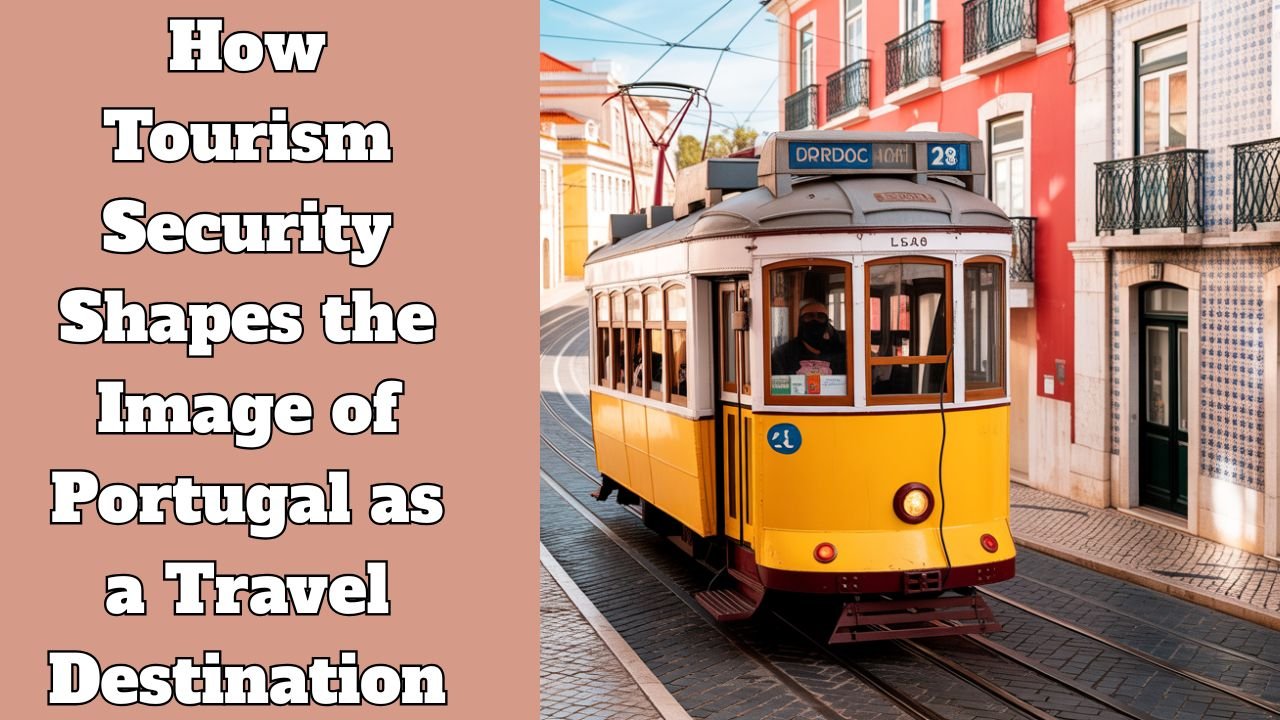Today’s tourist is more aware and cautious than ever before. When a person steps out of his everyday life and travels to an unknown place, he is not only looking for a new experience but also faces insecurity and risk. In such a situation, security of the destination becomes an important deciding factor for that tourist.
Especially in the current global context, when problems like terrorism, crime and political instability have become common, the tourism industry can be directly vulnerable to these threats. In this article, taking Portugal as a case study, an attempt has been made to understand how the level of security affects the image of a destination and to what extent it plays a role in the decision-making process of tourists.
Tourism security and destination image: A mutual relationship
Security and tourism are directly linked to each other. When a country or city is considered safe, the number of tourists automatically increases. On the other hand, if a place becomes notorious for violence, crime or terrorist attacks, its image is tarnished and tourism is affected.
This study shows that when tourists choose a destination, they gather information about the security situation of that place through the Internet, social media and news media. Globalization and the development of information technology have made this process easier.
Portugal: Safe or not?
Portugal, a peaceful and beautiful country in southwestern Europe, is known for its cultural heritage, beaches and historical sites. But is it also safe from the point of view of tourists?
To find the answer to this question, the authors conducted an online survey on 204 non-Portuguese participants. This survey sought to determine how foreign tourists perceive Portugal in terms of safety and whether these perceptions influence their travel plans.
Security versus crime and terrorism
This study divides tourism security into two components—terrorism and local crime.
- Terrorism is motivated by political, religious or philosophical motives and seeks to send a message to international tourists.
- Local crime, such as theft, robbery or assault, is committed for economic gain, often targeting unwary tourists.
Pizam (2006) argues that the security situation of a destination can be linked to a variety of events—such as war, unstable politics, or terrorist activities. In such cases, not only tourists are affected, but the entire tourism infrastructure—hotels, transport, local businesses and services.
The concept of risk and its role
It is important to understand that safety is not only an objective condition, but also based on perception. The image spread about a destination—whether it is created by the media or generated by one’s personal experience—can make or break its popularity.
According to Moraes and Tretin (2015), risk is the probability that a natural or human-made hazard may cause harm. It depends on the actual risk as well as the perception of that risk felt by the tourist. This perception has a profound effect on the decision process.
The influence of media and society
Korstanje (2015) in his study pointed out that different types of risks have different social impacts.
- Natural disasters, unknown diseases or political instability have a greater impact because it affects the whole society. * On the other hand, crimes such as terrorist attacks, food poisoning, or theft have relatively low social impact if they affect few people and are less likely to be repeated.
The role of the media is crucial in this context. A negative news story, such as an attack on tourists in a country, spreads very quickly and can permanently affect the image of the destination—even if the actual risk is low.
Tourism and the Global Security Environment
Hall (2003) argues that tourist behavior and the popularity of a destination are strongly influenced by perceptions of security. As long as a destination is perceived to be safe, tourism there will flourish. But as soon as security is in doubt, the number of tourists there declines. This is why security has become a strategic element in tourism management.
Make safety part of marketing strategy
The article specifically highlights the need to transform a country’s security image into a marketing strategy. If a destination is perceived as safe and stable, promoting that image can attract more tourists.
In the context of Portugal, this could be an opportunity. If international tourists perceive Portugal as safe, this should be highlighted in tourism promotional material. A data-driven approach and media support are essential for this.
Conclusion: Security is crucial in destination image
Tourism is no longer just a matter of beauty, cultural diversity and comfort. Today it is also a matter of security, risk management and image building.is deeply connected. This study makes it clear that security is no longer just a support mechanism, but has become the main decision factor.
Countries like Portugal, which are relatively peaceful and stable, should present their positive image strongly on the international stage. By doing this, not only tourism will be promoted, but prosperity will also come at the economic and social level.
Key words: tourism security, destination image, Portugal, tourist decision, marketing strategy, risk perception
